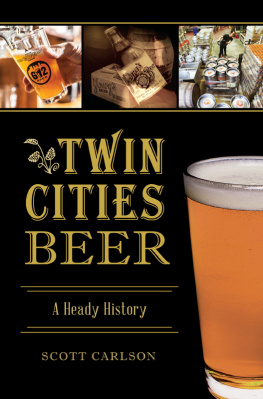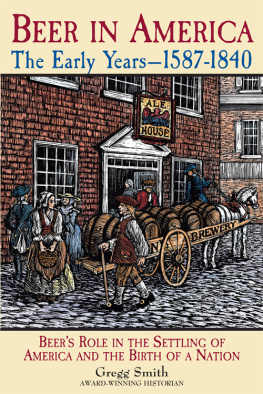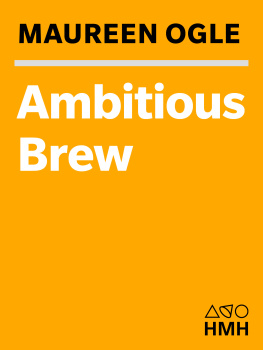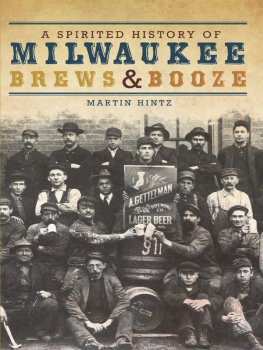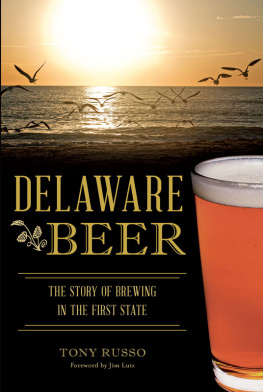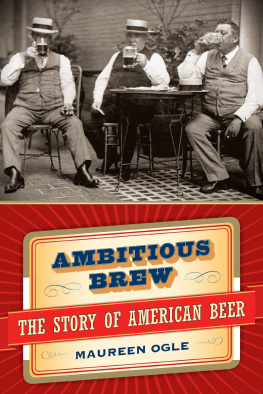Gettelman Frederick - Brewing in Milwaukee
Here you can read online Gettelman Frederick - Brewing in Milwaukee full text of the book (entire story) in english for free. Download pdf and epub, get meaning, cover and reviews about this ebook. City: Milwaukee (Wis.);Wisconsin;Milwaukee, year: 2014, publisher: Arcadia Publishing, genre: Home and family. Description of the work, (preface) as well as reviews are available. Best literature library LitArk.com created for fans of good reading and offers a wide selection of genres:
Romance novel
Science fiction
Adventure
Detective
Science
History
Home and family
Prose
Art
Politics
Computer
Non-fiction
Religion
Business
Children
Humor
Choose a favorite category and find really read worthwhile books. Enjoy immersion in the world of imagination, feel the emotions of the characters or learn something new for yourself, make an fascinating discovery.

- Book:Brewing in Milwaukee
- Author:
- Publisher:Arcadia Publishing
- Genre:
- Year:2014
- City:Milwaukee (Wis.);Wisconsin;Milwaukee
- Rating:3 / 5
- Favourites:Add to favourites
- Your mark:
- 60
- 1
- 2
- 3
- 4
- 5
Brewing in Milwaukee: summary, description and annotation
We offer to read an annotation, description, summary or preface (depends on what the author of the book "Brewing in Milwaukee" wrote himself). If you haven't found the necessary information about the book — write in the comments, we will try to find it.
Brewing in Milwaukee — read online for free the complete book (whole text) full work
Below is the text of the book, divided by pages. System saving the place of the last page read, allows you to conveniently read the book "Brewing in Milwaukee" online for free, without having to search again every time where you left off. Put a bookmark, and you can go to the page where you finished reading at any time.
Font size:
Interval:
Bookmark:
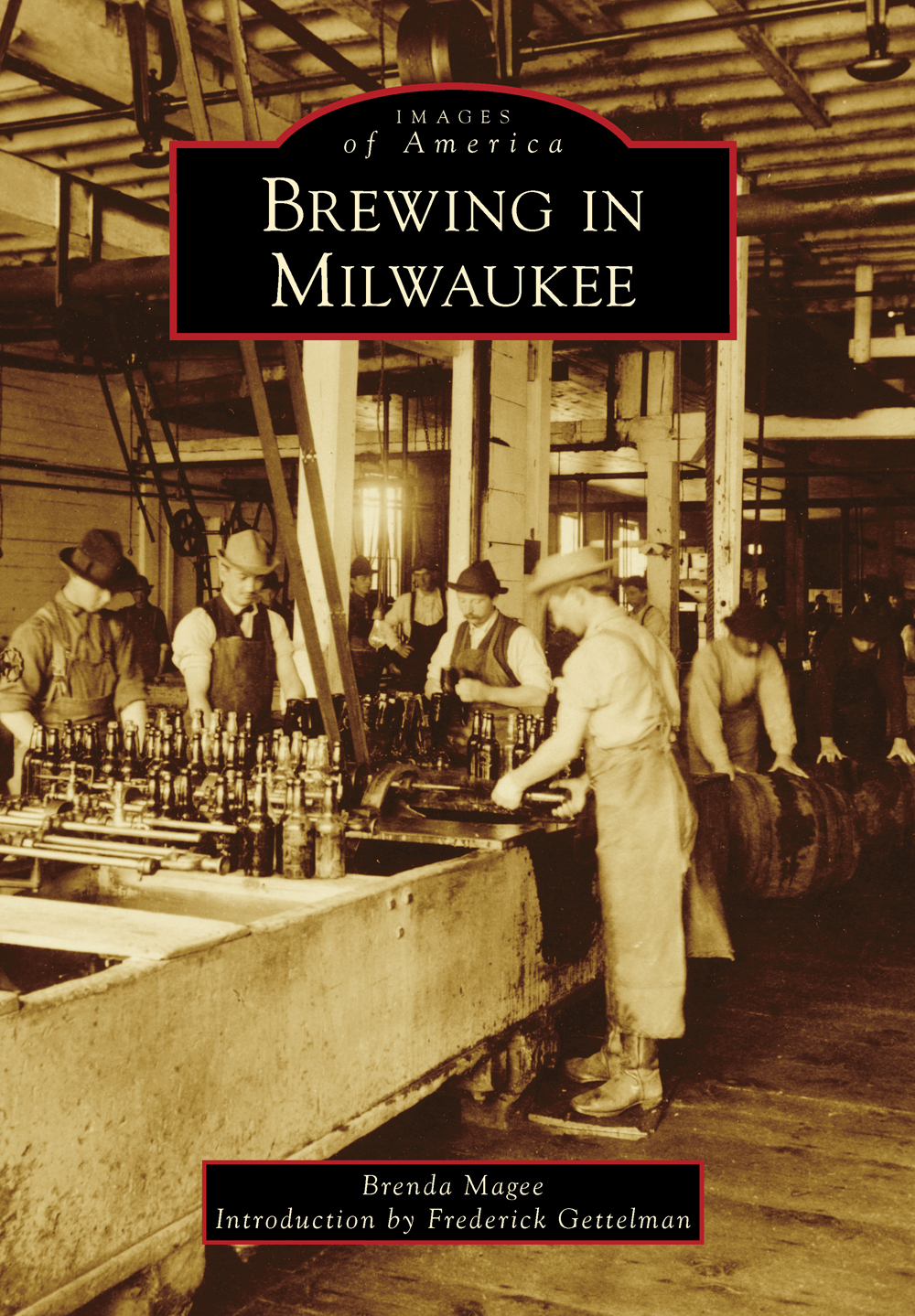
IMAGES
of America
BREWING IN
MILWAUKEE

No image is known to exist of Milwaukees beer barons together in a group. This imaginary sketch by Joel the AleMonger Mayer is his vision of how the four men who made Milwaukee famous should be recognized. From left to right are Joseph Schlitz, Frederick Miller, Valentin Blatz, and Capt. Frederick Pabst. (AleMonger craft beer blog, 2013.)
ON THE COVER: This photograph of a Miller Brewing Company bottling room, taken in 1899, illustrates the physical labor needed to run the brewery. Assigning workers task-specific jobs kept the plant running smoothly. This scene depicts an assembly line of sorts, with men in the background rolling full kegs of beer to be tapped and then transported to other workers who would fill the bottles with brew. (Milwaukee County Historical Society.)
IMAGES
of America
BREWING IN
MILWAUKEE
Brenda Magee
Introduction by Frederick Gettelman

Copyright 2014 by Brenda Magee
ISBN 978-1-4671-1095-2
Ebook ISBN 9781439644737
Published by Arcadia Publishing
Charleston, South Carolina
Library of Congress Control Number: 2013938251
For all general information, please contact Arcadia Publishing:
Telephone 843-853-2070
Fax 843-853-0044
E-mail
For customer service and orders:
Toll-Free 1-888-313-2665
Visit us on the Internet at www.arcadiapublishing.com
For my husband, Gerard, my rock; my children, Devon, Scott, Stacy, and Kimberly; and my granddaughters, Mackenzie, Sophie, Regan, and Isabel. Always rememberdreams dont have an expiration date.
CONTENTS
ACKNOWLEDGMENTS
There are so many individuals and teams who have helped in the development of this book, but I first need to thank my in-house technical assistant, computer guru, and photographer, my daughter Devon; she has been a lifesaver on many occasions. Thank you to my husband, Gerard, for his patience, love, support, and confidence. Appreciation to Sarah Hopley and her team at the Milwaukee County Historical Society; Dave Herrewig, MillerCoors Milwaukee Archives; John Eastberg, Pabst Mansion museum senior historian; and Kevin Cullen, of The Discovery World Museum. My sincerest appreciation to Sid Hatch for sharing his extensive brewery knowledge and extraordinary bottle collection. Sincerest thanks to the Gettelman family for their support and confidence and for sharing their family history in photographs and stories, and last but not least, Michael Reilly of the Sussex-Lisbon Area Historical Society for his dedication in making the societys archives and other material current and available to the public. Many thanks to Mary Iannone for her assistance in manuscript review. I would also like to thank the collectors, historians, archivists, volunteers, and docents who preserve the past so that the stories can be told again and again. Thank you all.
For me, inspiration for this book came from a historic Milwaukee home, the Christopher Latham Sholes house (inventor of the first practical typewriter), where my employer, TRC Global Solutions, is based. If walls could talk, they would echo conversations that strategized and shaped both the city and county of Milwaukee. It is truly exciting to imagine the wheeling and dealing of an eclectic mix of Milwaukee businessmen that transpired in that home 150 years ago.
The images in this volume have been used with permission and appear courtesy of the following:
AleMonger craft beer blog, 2013 (AM.)
Authors private collection (APC.)
Fred Gettelman collection (FGC.)
Jim Haertel, Best Place at Historic Pabst Brewery (JH.)
Jim Sponholz (JS.)
Library of Congress Prints and Photographs Division (LOC)
Mark Evers (ME.)
Max Kade Institute collection, University of Wisconsin, Madison (MKI.)
MillerCoors Milwaukee Archives (MMA.)
Milwaukee County Historical Society (MCHS.)
Milwaukee Journal Sentinel (MJS.)
Milwaukee Public Library (MPL.)
Museum of Beer and Brewing (MBB.)
Sid Hatch Bottle Collection (SHC.)
State Archives of Florida (SAF.)
The Biography Channel, www.biography.com (TBC.)
Wisconsin Historical Society (WHS.)
INTRODUCTION
The Milwaukee area went from a trading post to a settlement by 1820. In 1846, the settlements of Kilbourntown, Juneautown, and Walkerspoint joined to form what was to be Milwaukee. During this time, three Welshmen partnered to establish the first brewery, the Milwaukee Brewery, later called the Lake Brewery. Being Welshmen, they brewed what they knew, and that was an ale-style beer. Located on the dusty, dirty south side of town, the brewery did well enough until paying patrons got their first taste of real German lager. In the late 1840s and 1850s, a great number of German immigrants came to this country, many of them headed for Milwaukee.
Whether to escape hardship and political upheaval in ones homeland or to just start over, Milwaukee promised a bright future to anyone willing to go for the gusto. Leaving family and friends was understandably a difficult decision but worth the risk. The advent of the steamship made crossing the Atlantic less of an ordeal and cut passage time in half. By the 1860s, there were more German-language speakers and German newspapers than English in Milwaukee. German influence has left its mark on the city, on its great food, restaurants, architecture, love of culture and heritage (every summer, German Fest welcomes thousands of Germans to the lakefront), and strong work ethic, as well as the love of good German-brewed beer. Milwaukee was at the start and heart of the beer industry for well over 100 years.
Familiar names today, such as Miller, Pabst, Schlitz, Blatz, Gettelman, and many others, have made up the local fabric of this industry. Milwaukee was attractive to German brewers because of its source of fresh water, ice for cellars, and barley and hops, all of which were essential for brewing a German lager-style beer. These early brewers were extraordinarily talented businessmen. They were aggressive industrialists who achieved success through hard work and sound business sense coupled with strong family ties. The brewing industry had a definite domino effect; new brewery concepts and innovations necessitated partnerships and assistance of local businesses for supplies and materials, thus fueling the growth of manufacturing in Milwaukee. In the early days, distribution was limited by how far a horse could travel in half a day. The real growth came with the railroad, allowing shipment to distance cities; this put Milwaukee on the map, and Brewed in Milwaukee became a sign of quality, answering the question of how and why Milwaukee became famous for its brewing.
It is amazing to think that three names all from one city would stand out nationally and internationally as world-leading brewers. Pabst and Schlitz traded the title of largest brewer for a while, and Miller was always just behind. With their need for equipment and services, these three companies were the engines of Milwaukee growth. These needs made many companies national companies in their own right. Milwaukee became a leader in manufacturing, printing, packaging, containers, and malting. The population and employment was staggering, with large number of immigrants coming to Milwaukee for jobs and a new life in America.
There were well in excess of 100 breweries in Milwaukee history, but with many name changes, closings, and poor sales, few remained after Prohibition. The golden age of the beer barons was the 1890s through Prohibition. This period saw the growth in size of breweries and mansions; the creation of beer gardens, corner saloons, and tied houses; and the fastest-ever growth of the beer industry.
Next pageFont size:
Interval:
Bookmark:
Similar books «Brewing in Milwaukee»
Look at similar books to Brewing in Milwaukee. We have selected literature similar in name and meaning in the hope of providing readers with more options to find new, interesting, not yet read works.
Discussion, reviews of the book Brewing in Milwaukee and just readers' own opinions. Leave your comments, write what you think about the work, its meaning or the main characters. Specify what exactly you liked and what you didn't like, and why you think so.

